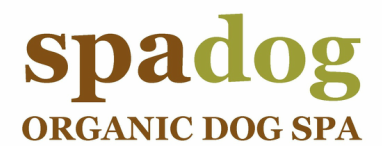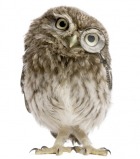
Itchiness can be upsetting… both for you, and your dog. You desperately want to help her, but you’re running out of ideas, and becoming frantic. You take her to the vet to be checked for fleas, but he doesn’t find any. Your vet suggests it may be allergies, so you buy the best hypoallergenic food he has to offer. He gave your dog allergy tests in an attempt to find out exactly what is bothering her, and treats her for fleas just in case. She goes for steroid shots which help with the itching, but make her feel terrible. Out of frustration, you go to the local pet store to see if they have a shampoo that will help. They’re more than happy to sell you one, until you realize as much as you want it to work, you really don’t think it does.
What do you do next? Well, go over to your dog, give her a big hug, and tell you’re going to make a commitment to her, ‘cause this is gonna take some effort. And you’ll need a journal.
Your dog’s skin is an indicator of her overall health, and often, the problem isn’t just skin deep, so to speak. We live in a toxic world, where potential irritants are a-plenty. Your dog may be reacting to something in her food, or something lacking in her diet. It may be environmental, perhaps something in your cleaning arsenal, or it could be the new rug you just brought home. Getting to the root of what’s causing your dogs discomfort takes a keen eye and diligence, and since your dog can’t talk, you’ll have to do all the detective work yourself.
First, have your groomer check for fleas even though your vet already did. Your groomer has a more intimate relationship with your dog’s skin & coat, and this is what she specializes in. Because fleas move so quickly across your dogs body, she can get a much better look at the skin when it’s wet, and by using a hairdryer to part the coat, can move the hair aside quicker than fingers can.
If she does find fleas, ask if she offers a chemical free alternative to getting rid of them and have her do this. At this point, it is best to deal with the flea issue you probably have in your home at the same time your dog is getting rid of the fleas on her end of things. What happens is this: the fleas that live on your dog bite her, and excrete dried blood, and lay eggs. The eggs and ‘flea dirt’ are dry and fall off your dog wherever she goes, so a serious vacuuming is in order. Be sure to empty your vacuum into the garbage right away, and remove it from your house immediately. Then consider every surface your dog lays on, and launder what you can, vacuum what you can’t. It’s crucial to do a good job, otherwise those little eggs hatch into larva which eat the ‘flea dirt’ and later become fleas, only to jump back onto your dog within a day or two. Resist the urge to spray a chemical insecticide; these are highly toxic for everyone, despite what the manufacturer may say.
What do you do next? Well, go over to your dog, give her a big hug, and tell you’re going to make a commitment to her, ‘cause this is gonna take some effort. And you’ll need a journal.
Your dog’s skin is an indicator of her overall health, and often, the problem isn’t just skin deep, so to speak. We live in a toxic world, where potential irritants are a-plenty. Your dog may be reacting to something in her food, or something lacking in her diet. It may be environmental, perhaps something in your cleaning arsenal, or it could be the new rug you just brought home. Getting to the root of what’s causing your dogs discomfort takes a keen eye and diligence, and since your dog can’t talk, you’ll have to do all the detective work yourself.
First, have your groomer check for fleas even though your vet already did. Your groomer has a more intimate relationship with your dog’s skin & coat, and this is what she specializes in. Because fleas move so quickly across your dogs body, she can get a much better look at the skin when it’s wet, and by using a hairdryer to part the coat, can move the hair aside quicker than fingers can.
If she does find fleas, ask if she offers a chemical free alternative to getting rid of them and have her do this. At this point, it is best to deal with the flea issue you probably have in your home at the same time your dog is getting rid of the fleas on her end of things. What happens is this: the fleas that live on your dog bite her, and excrete dried blood, and lay eggs. The eggs and ‘flea dirt’ are dry and fall off your dog wherever she goes, so a serious vacuuming is in order. Be sure to empty your vacuum into the garbage right away, and remove it from your house immediately. Then consider every surface your dog lays on, and launder what you can, vacuum what you can’t. It’s crucial to do a good job, otherwise those little eggs hatch into larva which eat the ‘flea dirt’ and later become fleas, only to jump back onto your dog within a day or two. Resist the urge to spray a chemical insecticide; these are highly toxic for everyone, despite what the manufacturer may say.


